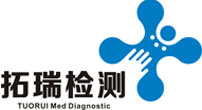犬尿石症病因分析
作者:任俊玲,李和平,马恒东*
【摘要】:犬尿结石症的发病率在1.2%~2.8%,结石成分主要分为磷酸盐、草酸盐、尿酸盐、胱氨酸、硅酸盐结石等。母犬比公犬的发病率高,3岁左右犬多发,冬夏两季较为流行(1.93%,1.23%),以膀胱结石最常见,小种髯犬、腊肠犬、比格犬、京巴、西施犬等品种易发。各种阳离子摄入的减少、氨基酸之间的相互影响以及饮水量不足等营养性因素对结石形成影响较大。尿液中葡萄球菌属、链球菌属、变形菌属细菌是结石形成的重要因素
- 【关键字】:
- 犬;尿石症;病因
- 【参考文献】:
- [1] Brown N O,Parks J L,Greene R W.Canine urolithiasis:retrospec.tive analysis of 438 cases[J].Journal of the American VeterinaryMedical Association,1977,170(4):414—418. [2] Nandi S,Chakrabarti A,Lodh C.Prevalence of canine urolithiasis inand around Kolkata[J].Indian Journal of Veterinary Medicine,2003,23(1):38.39. [3]Houston D M,Moore A E P,Favrin M G,et a1.Canine urolithiasis:a look at over 16000 urolith submissions to the Canadian Veterinary Urolith Centre from February 1 998 to April 2003[J].CanadianVeterinary Journal,2004,45(3):225-230. [4] Kim ChaeWook,Choi U1Soo,Chegal Jun,et a1.Canine urolithiasis:interrelation between breed,age,sex,anatomic,location,urine pH,crystal and mineral composition of uroliths(270 cases)[J].Journal of Veterinary Clinics,2004,21(3):264-269. [5] 周秋平,金银姬,石益兵,等.56例犬尿结石的榆验及成因分析[J].畜牧与兽医,2003,35(4):35-37. [6] Franti C E,Ling G V,Ruby A L,et a1.Urolithiasis in dogs V:re—gional comparisons of breed,age,sex,anatomic location,and mineral type of calculus[J].American Journal of Veterinary Research,1999,60(1):29.42. [7]Ling G V,Franti C E,Johnson D L,Urolithiasis in dogs IV:survey of interrelations among breed,mineral composition,and anatomic lo—cation of calculi,and presence of urinary tract infection[J].Ameri·can Journal of Veterinary Research,l998,59(5):650—660. [8] Sosnar M,Bulkova T,Ruzicka M.Epidemiology of canine urolithiasis in the Czech Republic from 1997 to 2002[J].The Journal of small animal practice,2005,46(4):177-】84. [9] Jeong SeongMok.Urolithiasis in dogs:comparison of breed,gender,anatomic location.urinalysis and mineral composition of calculus(30cases)[J].Journal ofVeterinary Clinics,2002,19(2):272—275. [10]Lekcharoensuk C,Lulich J P,Osborne C A,et a1.Patient and envi,ronmental factors associated with calcium oxalate urolithiasisin dogs [J].Journal of the American Veterinary Medical Association,2000,217(4):515-519. [11]邓益锋,钱存忠,杨茜,等.8例犬尿石症的诊治体会[J].畜牧与兽医,2005,37(6):38.39. [12]Hoppe A,Denneberg T,Jeppsson J O,et a1.Urinary excretion of a—mino acids in normal and cystinuric dogs[J].British Veterinary Journal,1993,149(3):253-268. [13] Stevenson A E,Blackburn J M,Markwell P J,et a1.Nutrient intake and urine composition in calcium oxalate stone-forming dogs:comparisonwith healthy dogs and impact of dietary modification[J].Veter—inary Therapeutics,2004,5(3):218231. [14]Ling G V,Franti c E,Johnson D L,Urolithiasis in dogs III:survey of interrelations among breed,mineral composition,and anatomic 10—cation of calculi,and presence of urinary tract infection[J].Ameri·can Journal of Veterinary Research,1998,59(5):643—649. [15] Feldman E C,Hoar B,Pollard R,et a1.Pretreatment clinical and laboratoryfindings in dogs with primary hyperparathyroidism:210 cases(1987·2004)[J].Journal ofthe American Veterinary Medical Asso—ciation,2005,227(5):756_761. [16]Hess R S,Kass P H,Ward C R.Association between hyperadreno.corticism and development of calcium—containing uroliths in dogs with urolithiasis f J].Journal of the American Veterinary Medical ASsoci—ation,1998,212(12):1889.1891.
犬尿石症病因分析
任俊玲,李和平,马恒东*
(四川农业大学动物科学院,四川雅安625014)
摘要:犬尿结石症的发病率在1.2%~2.8%,结石成分主要分为磷酸盐、草酸盐、尿酸盐、胱氨酸、硅酸盐结石等。母犬比公犬的发病率高,3岁左右犬多发,冬夏两季较为流行(1.93%,1.23%),以膀胱结石最常见,小种髯犬、腊肠犬、比格犬、京巴、西施犬等品种易发。各种阳离子摄入的减少、氨基酸之间的相互影响以及饮水量不足等营养性因素对结石形成影响较大。尿液中葡萄球菌属、链球菌属、变形菌属细菌是结石形成的重要因素之一。
关键词:犬;尿石症;病因
中图分类号:$858.292.659 文献标识码:B 文章编号:0529-5130(2007)01-0040—03
犬尿石症(Canine urolithiasis)是指尿路中有机盐类或无机盐类结晶的凝结物,即结石、积石或多量结晶刺激尿路黏膜而引起出血、炎症和阻塞的一种泌尿器官疾病。Brown等报道美国的犬发病率为2.8%[1] ,Nadi报道印度的犬发病率为1.21%[2] ,南京师皇动物科技研究所门诊统计的发病率为1.6%。犬结石症数量的增加,促使国内外兽医工作者对该病进行了大量的研究。通过对犬结石症病例资料的回顾,现就所掌握的资料对犬尿石症病因进行分析。
1犬尿结石化学成分
根据化学成分不同,犬尿结石可分为磷酸盐结石、草酸盐结石、尿酸盐结石、胱氨酸结石、硅酸盐结石和碳酸盐结石。Brown等对438例尿结石症病例进行回顾性分析,磷酸盐结石为70.1%,胱氨酸结石22%,碳酸盐结石0.1%,尿酸盐结石5%,草酸盐结石4%[1] ;而加拿大Houston等人对1998~2003年兽医结石中心的16 647例犬尿石症分析,43.8%为鸟粪石(磷酸铵镁盐结石,MgNH4PO4。·6H20),41.5%为草酸盐[3];Kim对首尔民族大学兽医院270例病例分析,鸟粪石54.1%,草酸钙30.4%[4];周秋平等对56例犬尿结石分析,磷酸盐结石为67.9%,胱氨酸结石3.6%,碳酸盐结石5.4%,草酸盐结石12.5%[5]。通过以上数据可知,犬尿结石的化学成分最常见的是磷酸盐;其次是草酸盐;而胱氨酸、尿酸盐、硅酸盐、碳酸盐少见。
2 影响尿结石生成的相关因素
尿是高度饱和溶液,含有大量呈溶解状态的盐类晶体物质及一定量的胶体物质,晶体盐类与胶体之间保持着相对的平衡。一旦这种平衡被破坏,则尿中的盐类晶体就不断析出,进而围绕核心物质形成尿结石。诱导犬发生尿结石的因素很多,下面从犬的性别、品种、年龄、部位、食物等因素作分析。
2.1性别因素
Franti对13 552例结石样本分析,52.1%来自母犬,47.9%来自公犬[6] ;Ling对美国加利福尼亚兽医学院11 000例犬结石调查,5 781例为母犬,5 215例为公犬[7] ;而Sosnar对1 366例病例分析,公犬比母犬易发(61.4%,38.6%) [8],这与Jeong报道相一致[9] 。从相关数据分析,样本数较大时,母犬发病率略高于公犬。同时许多研究表明,母犬以鸟粪石(磷酸铵镁)结石为主,公犬则以草酸盐结石为主。
2.2年龄因素
Kim报道,犬结石发生于4月龄到15岁的犬,但主要发生于3岁犬,平均年龄是5.68±3.14[4] ;Brown报道为3—7岁最易发生[1] 。Lekcharoensuk对1 074例草酸钙结石病犬调查发现,平均年龄8~12岁去势公犬易发草酸钙结石,尿结石的发生与年龄增长相伴[10] 。周秋平报道,犬结石多出现于1岁以上8岁以下的犬,2~4岁最常见[5] 。
2.3季节因素
Nandi对2000年9月到2001年8月期间印度孟加拉邦尿石症流行情况分析,称犬结石在冬季最流行,约为1.93%,接下来是夏季(1.23%),最低为雨季(0.51%)[2] 。国内未见相关报道。
2.4发病部位
Kim报道131例公犬,53例在膀胱,24例在尿道,45例膀胱尿道并发;而母犬131例中有103例发生在膀胱[4] 。Ling发现,93.1%的母犬和79.0%的公犬结石发生在膀胱,4%的母犬和2%的公犬位于上尿路,23.1%的公犬和5.2%的母犬发生于多个部位[7] 。单纯膀胱结石发病率最高,其次为膀胱尿道并发,单纯尿道结石的发病率最低。单纯膀胱结石中,母犬发病率高于公犬。这是由于母犬的尿道较公犬短,易引起膀胱尿道感染,从而导致结石的发生。单纯尿道结石中,公犬发病率远高于母犬。这是因为公犬尿道弯曲,如坐骨弓处,导致结石形成后不易排出,加之尿道粗细不均,有明显的狭窄部位,如阴茎凹槽部,也可引起结石排出的障碍。
2.5品种因素

